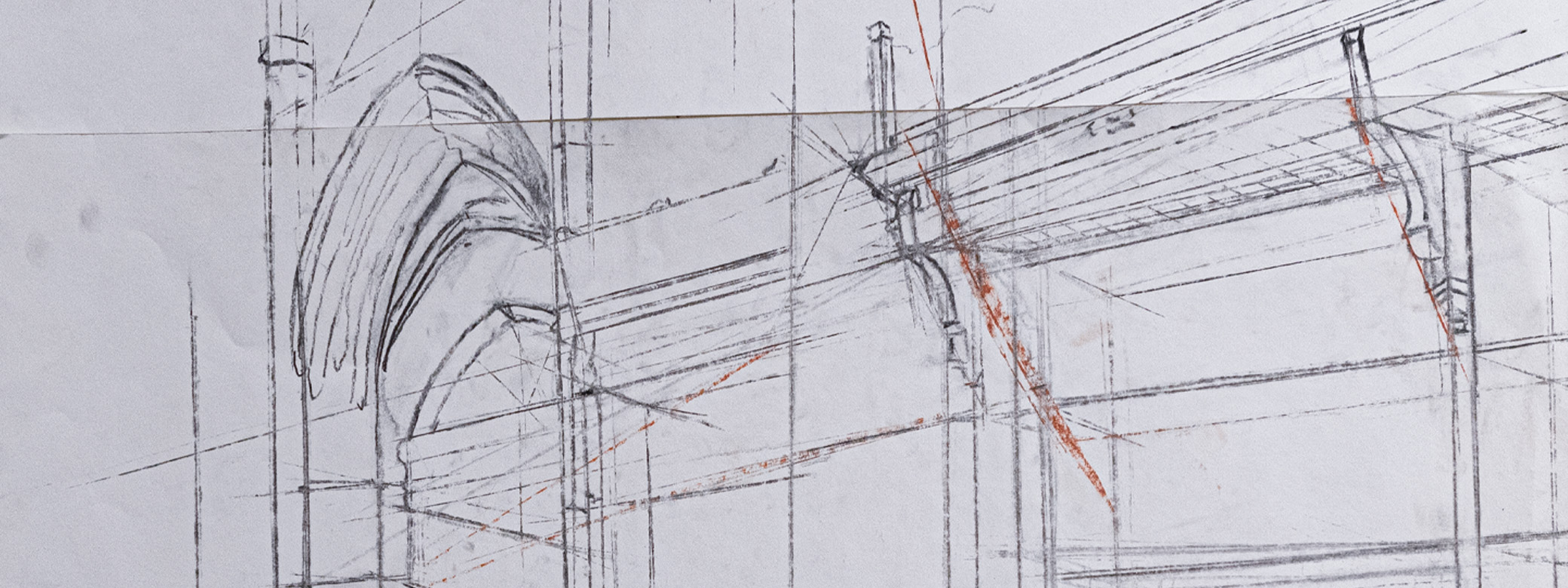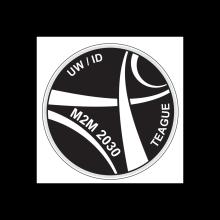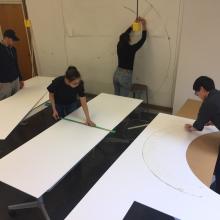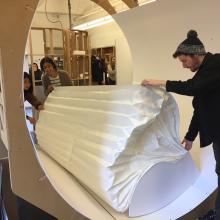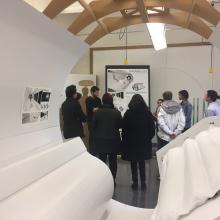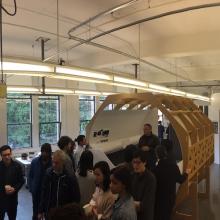Collaborations and connecting coursework to professional practice are a significant aim of the Industrial Design (ID) Program. ID works with a range of corporations and consultancies each year to facilitate senior studio classes focusing on an exploratory topic that fits with the sponsoring organization. The DESIGN 445 course during autumn quarter 2017 was an example of just how powerful these collaborations can be. ID seniors and Assistant Professor Jason Germany partnered with TEAGUE to explore the future of space mobility. The title of the class was Mission to the Moon: 2030, and it centered on conceptual design and problem solving to address the future of space tourism. "We were intrigued by the challenge of designing experiences in extreme zero-g environments and by what we could learn from the students' unique perspectives," said Justin Lund, Senior Technical Designer at TEAGUE. Space travel was once the realm of large government agencies, but, increasingly, the private sector has developed significant initiatives aimed at commercializing space travel. Whether it is entities like SpaceX or Virgin Galactic, commercialization will be part of future space exploration, and the class proposed what that might look like.
Designing for a zero gravity environment and self-contained vehicle is a challenging process, but it began with students researching everything from the daily tasks of Apollo mission astronauts to watching hours of videos from the International Space Station (ISS). "Space, being weightless and having no orientation, is easy to grasp conceptually. However, understanding the implications of that and designing effectively is not," said student Nirawit Jittipairoj. To better support their understanding of these constraints, students conducted immersive studies, which included swimming pool exercises to emulate tasks in weightlessness or isolation exercises to learn about the impact tight quarters has on social dynamics. This research quickly led the way to small scale prototyping and, finally, full scale interior mockups.
This iterative process allowed students to work quickly and have a direct understanding of the interior environment of their proposed spacecraft. TEAGUE was instrumental in providing the physical mockup structures for student prototyping, but their contribution went far beyond that. "TEAGUE has an extensive legacy in aviation design and an outstanding team of individuals that continue to build on that heritage…their contribution to the students and this project was invaluable," said Professor Germany. Throughout the ten-week project, their aviation design team generously contributed their expertise and feedback to the student teams by offering guidance in approaches to user experience design and strategy all the way to design execution. "Collaborating with UW students was very rewarding for us!" said Tara Sriram, Industrial Designer at TEAGUE. "We proposed a complex design problem and got to witness their process of discovery and insight." Ultimately, each student team crafted their own seven day lunar journey and designed a spacecraft interior concept to support that out of world experience. These designs culminated in a final review and evening exhibit on January 11, 2018.
